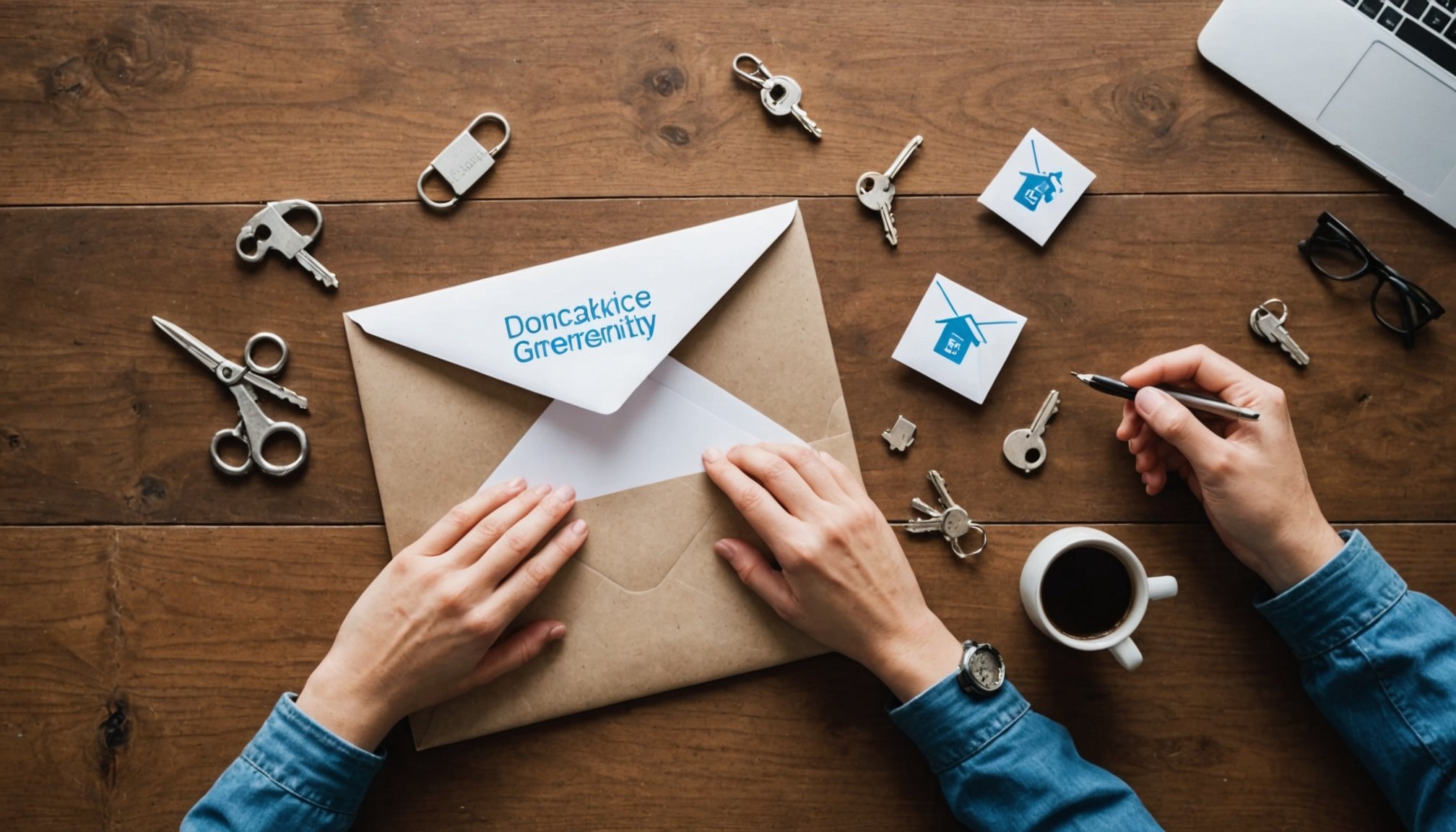Unlocking Generosity: Top Email Marketing Tactics for Boosting UK Nonprofit Donations
The Power of Email Marketing for Nonprofits
Email marketing is a cornerstone of any nonprofit’s fundraising strategy, offering a direct and personal way to connect with donors and supporters. In the UK, where digital engagement is on the rise, leveraging email marketing effectively can significantly boost donations and overall support for nonprofit organizations.
Why Email Marketing Matters
Email marketing stands out as a highly effective channel for several reasons:
Have you seen this : Enhancing Engagement: The Ultimate UK Interior Design Showroom Guide to Hosting Virtual Tours on Instagram Live
- High ROI: With two-thirds of marketers believing email provides the best return on investment (ROI), it is a crucial tool for nonprofits looking to maximize their fundraising efforts[3].
- Personal Connection: Email allows for a personal and human touch, enabling nonprofits to address supporters by name, share personal stories, and provide updates that feel thoughtful and relevant[1].
- Wide Reach: With 4.5 billion email users worldwide, email marketing offers an unparalleled reach, making it an indispensable part of any nonprofit’s marketing toolkit[3].
Crafting Compelling Email Content
The success of email marketing campaigns for nonprofits hinges on the quality and relevance of the content. Here are some key strategies to craft compelling emails:
Use Storytelling Templates
Stories are the heart of nonprofit emails. They help supporters feel connected and inspired to contribute. Here’s how you can use storytelling effectively:
Topic to read : Unlocking Instagram’s Potential for UK Subscription Boxes: Innovative Strategies to Showcase Monthly Themes
- Real Images and Stories: Create a storytelling template with real images and stories of the lives you’ve touched. Include direct quotes or testimonials to add depth and emotion[1].
- Visuals and CTAs: Use visuals like photos or videos and include a call-to-action (CTA) link to the full story on your website or blog. This encourages supporters to engage further with your content.
- Social Media Reposts: Repost stories from your newsletter on social media to reach a broader audience and drive traffic back to your website.
Personalize Your Emails
Personalization is key to making your emails feel more thoughtful and human. Here are some ideas to personalize your emails:
- Greet Supporters by Name: Address supporters by their first name in both the subject line and the email body. This simple gesture can significantly increase engagement[1].
- Localized Updates: Send localized updates, such as event invites based on the supporter’s location, to make the content more relevant.
- Segmented Emails: Use robust marketing automation tools to send targeted emails based on list segments. This ensures that each supporter receives content that is tailored to their interests and past interactions[1].
Keeping Supporters Updated with Newsletters
Newsletters are an excellent way to keep supporters informed and engaged. Here’s how you can make the most out of your newsletters:
Consistent Scheduling
- Newsletter Calendar: Create a newsletter calendar to ensure consistency. Schedule newsletters in advance to keep your supporters always connected to your cause[1].
- Milestones and Success Stories: Share recent milestones, success stories, and upcoming events to keep the content fresh and engaging.
Diversifying Your Content
- Impact Reports: Include impact reports and real-life stories to diversify your newsletters. This helps supporters see the tangible impact of their donations and encourages continued support[1].
- Varied CTAs: Create varied email calls-to-action (CTAs) that go beyond financial donations. Encourage supporters to volunteer, share information on social media, or advocate for policy changes[2].
Boosting Donations with Clear CTAs
Fundraising emails are most effective when the ask is clear and direct. Here are some tips to boost donations:
Clear and Direct Asks
- Bold CTAs: Use bold, prominent CTA buttons that guide donors to a simple and secure donation page. Place the CTA above the fold and repeat it at the end of the email[1].
- Transparency: Highlight how contributions will be used to drive transparency and trust. Showcasing a specific goal with a timeline can also encourage faster action[1].
Matching Gifts and Urgency
- Matching Gifts: If possible, use matching gift campaigns to create a sense of urgency and encourage more donations.
- Time-Sensitive Appeals: Use time-sensitive appeals, such as those around #GivingTuesday, to add weight to your fundraising requests[1].
Leveraging Data for Personalized Campaigns
Data analytics is crucial for creating personalized and effective email campaigns. Here’s how you can use data to your advantage:
Defining the Next Best Action
- Behavioural Insights: Use a combination of data analytics and behavioural insights to segment your audience and craft emails that are relevant to where they are in their journey with your charity[2].
- Automated Emails: Implement automated emails triggered at key moments in the supporter’s journey. For example, send notifications when a fundraising page is created, a milestone is reached, or an event is upcoming[2].
Tailoring Messaging to Different Supporter Groups
- Segmented Messaging: Tailor your email content based on supporter demographics and past behaviour. Younger supporters may prefer shorter, action-oriented emails, while older donors may appreciate more detailed updates[2].
- Relevant CTAs: Ensure that your CTAs are relevant to the specific segment of your audience. This could include attending an event, signing a petition, or sharing content online[2].
Choosing the Right Email Marketing Platforms
Nonprofits need email marketing tools that balance affordability with functionality. Here are some considerations when choosing a platform:
Mobile-Friendly Templates
- Affordable Platforms: Look for platforms offering nonprofit discounts or free plans. Sender, for example, offers a generous free plan with stunning mobile-responsive templates and a drag-and-drop editor[1].
- Ease of Use: Choose a platform that is easy to use, even for those without extensive technical expertise. This ensures that you can focus on creating compelling content rather than navigating complex software[3].
Promoting Recurring Donations
Recurring donors provide financial stability and continuity for nonprofits. Here’s how you can promote recurring donations effectively:
Transparency and Flexibility
- Impact Stories: Include real-life impact stories of how recurring support is making a difference. This helps donors see the ongoing value of their contributions[1].
- Flexible Options: Offer flexible options like monthly, quarterly, or annual donations. Clearly state in your emails that donors can stop the donation anytime they want[1].
- Personalized Thank You Messages: Send personalized emails to thank supporters after every donation, reinforcing the importance of their ongoing support[1].
Examples of Effective Email Campaigns
Here are some real-life examples of effective email campaigns that nonprofits can replicate:
Action Email
- Tripadvisor Foundation Example: The Tripadvisor Foundation centered an email around a worthy cause, highlighting the on-ground impact of their efforts. This approach works well for time-sensitive issues and encourages regular donations[1].
Fundraising Email
- Childcare House Example: A childcare house sent a personal fundraising appeal from the executive director’s desk on #GivingTuesday. This personal tone made the request more impactful than generic fundraising emails[1].
Impact Report Email
- Charity Water Example: Charity Water used a real image with a heartfelt quote from beneficiaries to create an instant connection with recipients. This approach diversifies newsletters and shows the human angle of the charity’s work[1].
Table: Comparing Key Email Marketing Strategies
| Strategy | Description | Benefits |
|---|---|---|
| Storytelling | Use real images and stories to showcase impact. | Increases emotional connection and engagement. |
| Personalization | Address supporters by name, use localized updates. | Enhances relevance and human touch. |
| Clear CTAs | Use bold, prominent CTAs above the fold and at the end. | Increases donation rates and clarity. |
| Data-Driven Campaigns | Use behavioural insights to trigger automated emails. | Ensures relevance and timely engagement. |
| Recurring Donations | Offer flexible options and transparent impact stories. | Provides financial stability and donor retention. |
| Mobile-Friendly Templates | Choose platforms with mobile-responsive templates. | Ensures emails look great on any device, increasing engagement. |
Best Practices for Charities Email Marketing
Here are some best practices to keep in mind when implementing your email marketing strategy:
Broaden the Definition of Success
- Diversify Actions: Ask for various forms of support beyond financial donations, such as volunteering or sharing content on social media. This keeps messaging relevant and engaging[2].
Redefine Lifetime Value (LTV)
- Include All Forms of Support: Analyze data to understand the full value of your supporter base, including non-financial contributions. This helps in tailoring email campaigns more effectively[2].
Tailor Messaging
- Segment Your Audience: Tailor email content based on supporter demographics and past behaviour. This ensures that your messaging resonates with each group’s specific motivations[2].
Quotes from Experts
- “Email marketing is an indispensable part of your marketing toolkit. There are 4.5 billion email users worldwide and research suggests two-thirds of marketers believe email provides the best ROI.” – Charity Digital Academy[3]
- “Personalisation allows charities to send supporters communications that are relevant and tailored to them, such as meaningful thank you messages after donations or information on how that donation has been spent.” – Charity Digital[4]
- “By broadening the definition of success, rethinking lifetime value, using data to guide supporters through their journey, and tailoring messages to specific groups, you can create email campaigns that not only engage but also inspire deeper, more meaningful interactions.” – Nick Crawford, DMA[2]
Email marketing is a powerful tool for UK nonprofits looking to boost donations and engagement. By leveraging storytelling, personalization, clear CTAs, data-driven campaigns, and the right email marketing platforms, nonprofits can create compelling and effective email campaigns. Remember to diversify your actions, redefine LTV, and tailor your messaging to different supporter groups. With these strategies, you can unlock generosity and foster long-term supporter relationships, ensuring sustained engagement and contributions to your cause.
By following these top email marketing tactics, UK nonprofits can enhance their fundraising efforts, deepen engagement with supporters, and ultimately make a greater impact in their communities. Whether you are just starting out or looking to refine your existing strategy, these best practices will help you navigate the ever-evolving landscape of digital marketing and charity fundraising.











